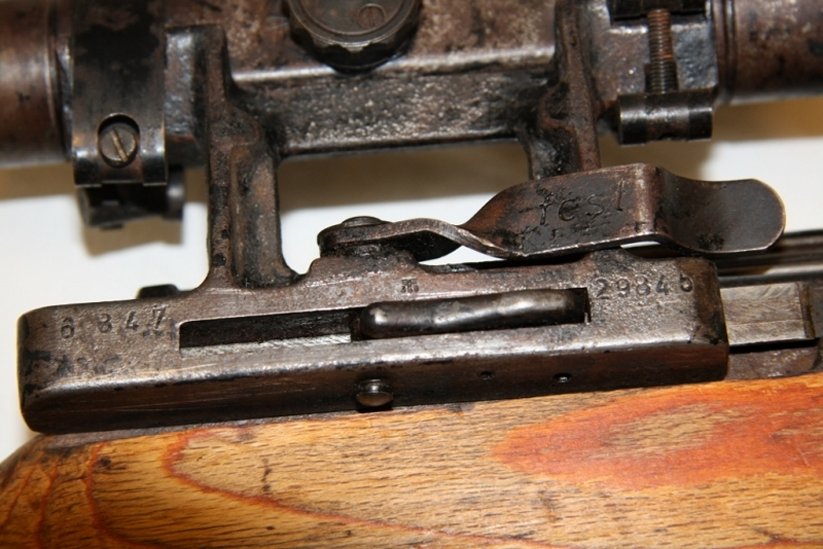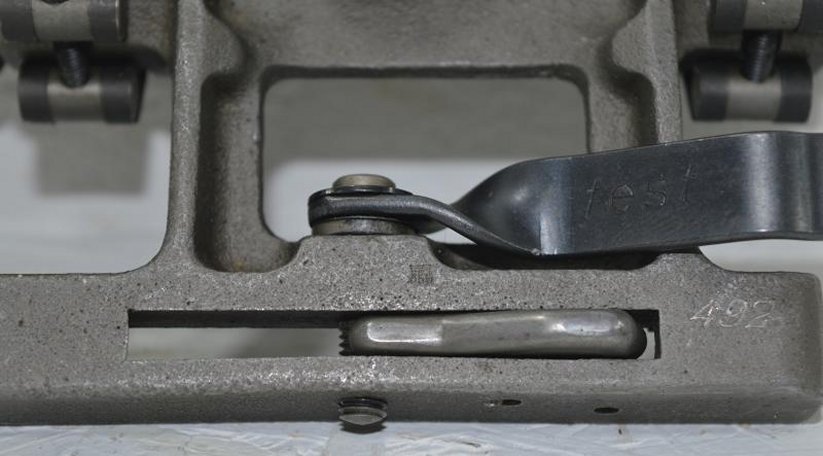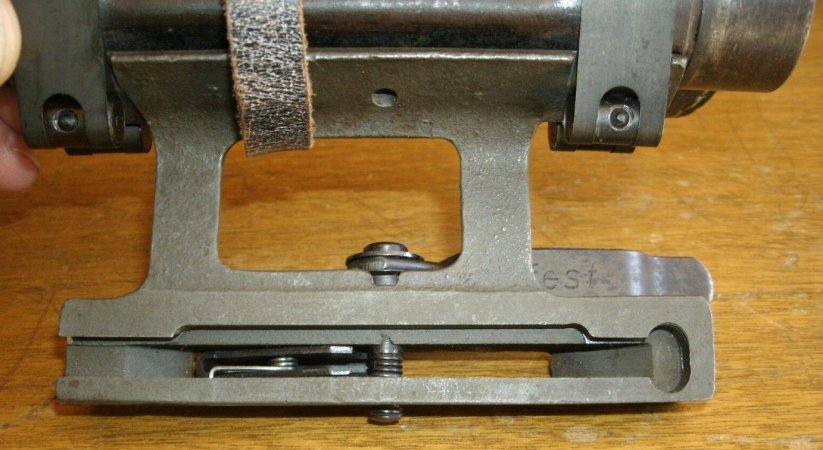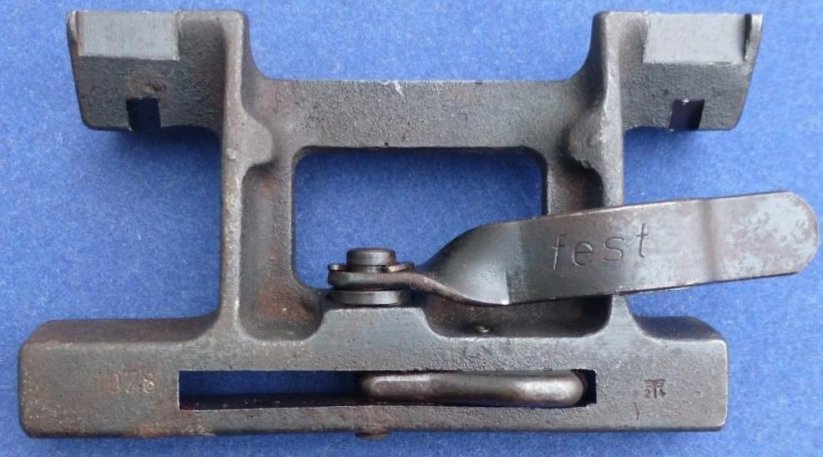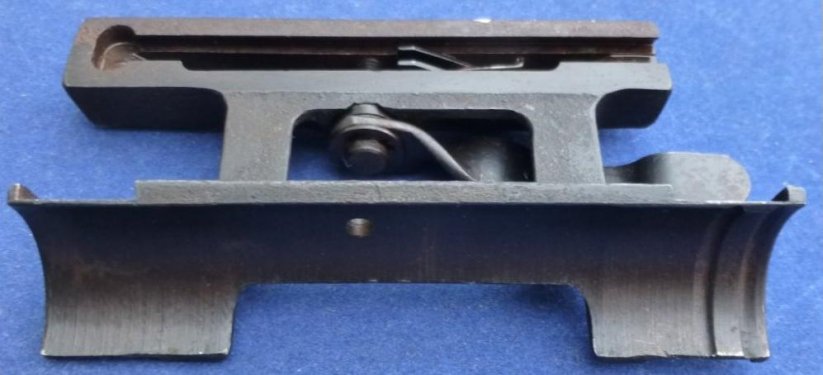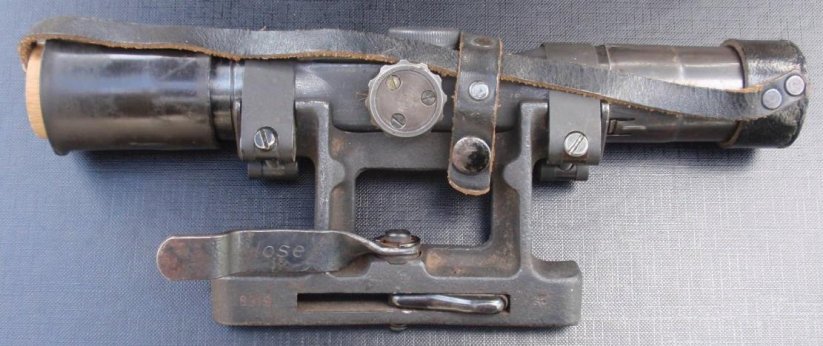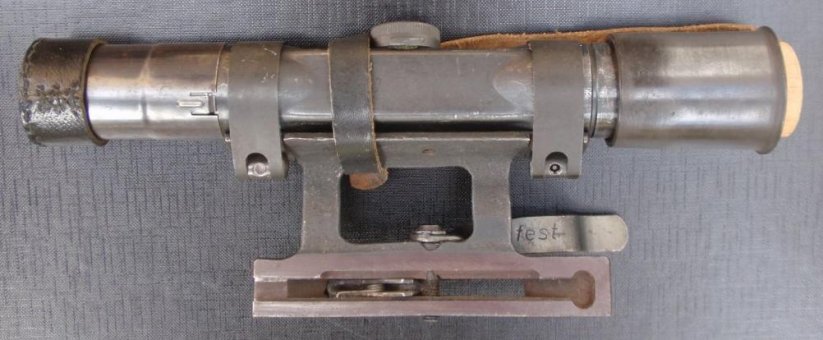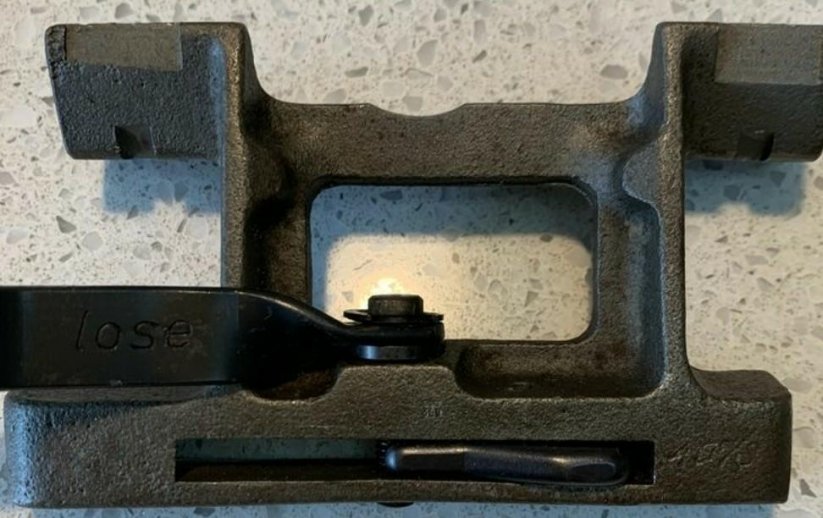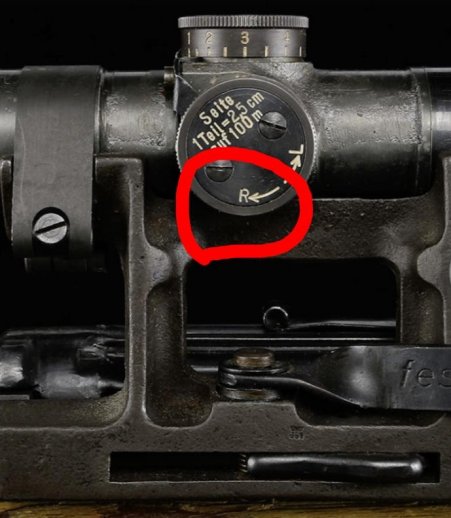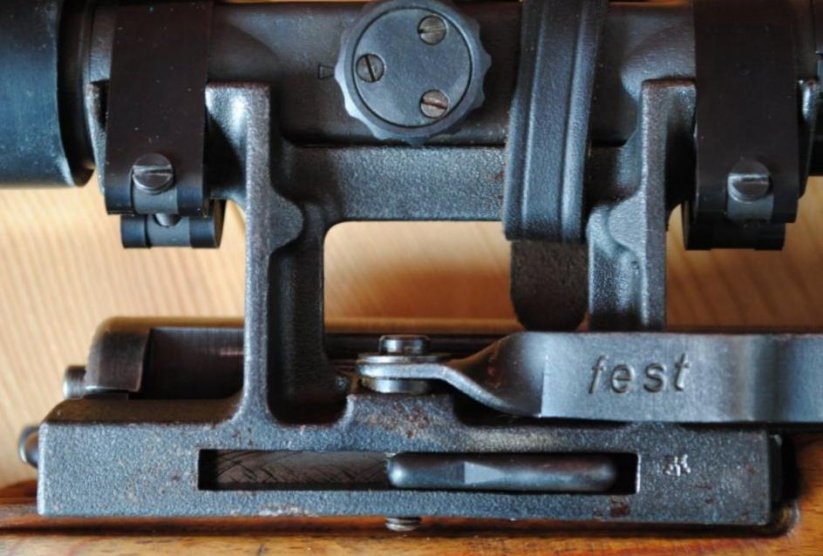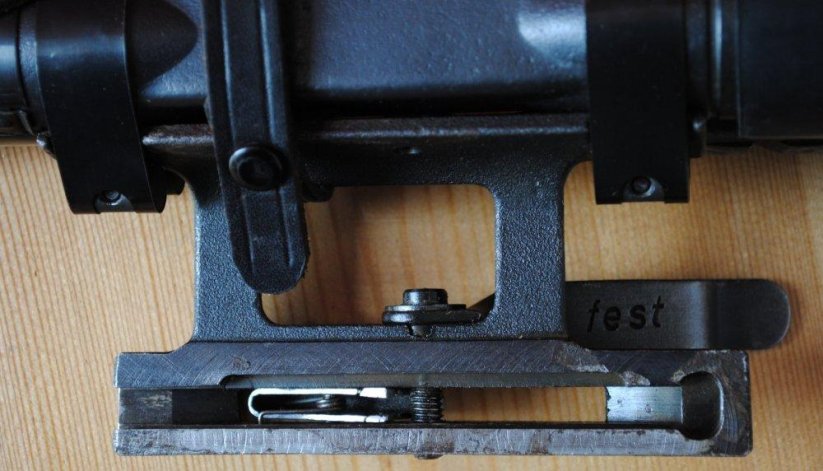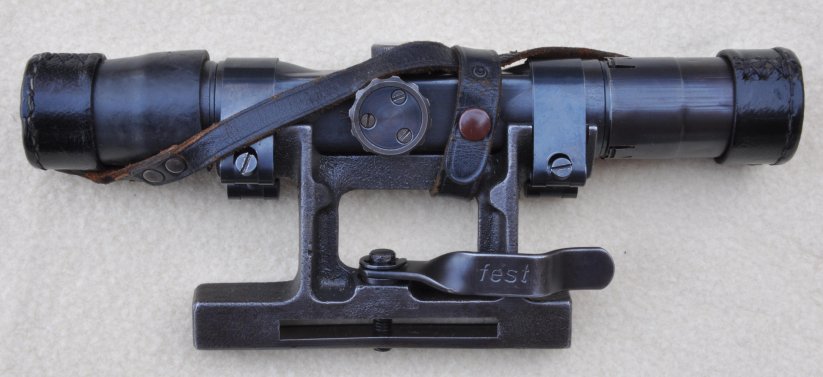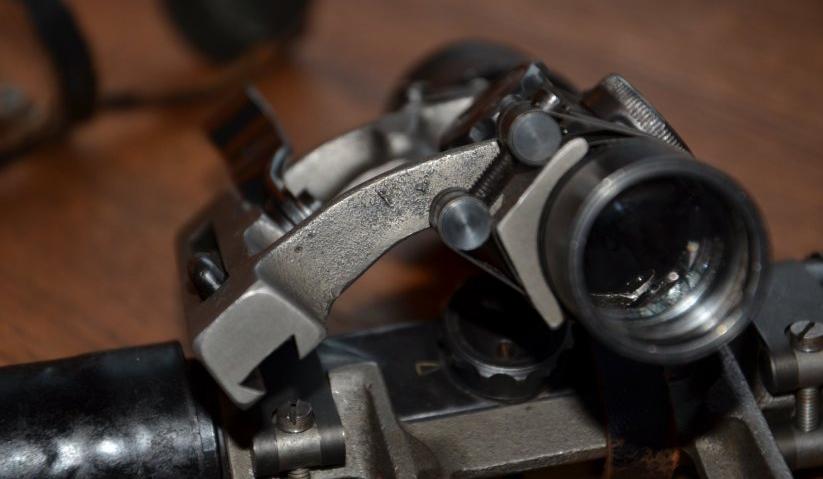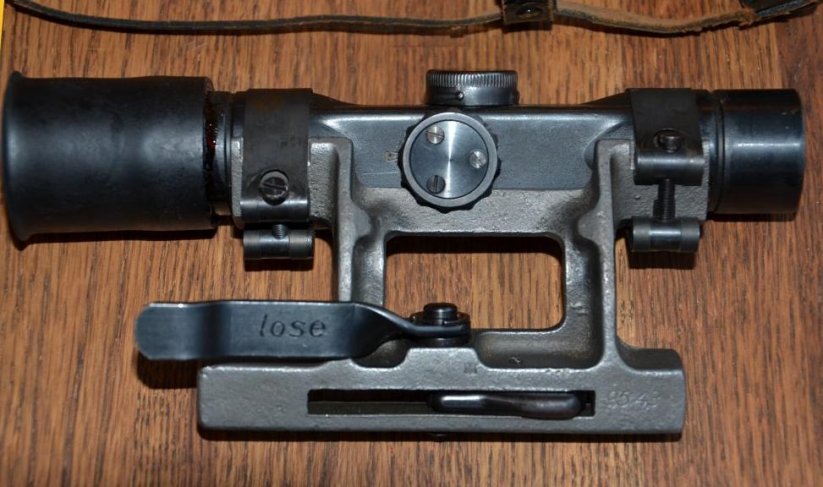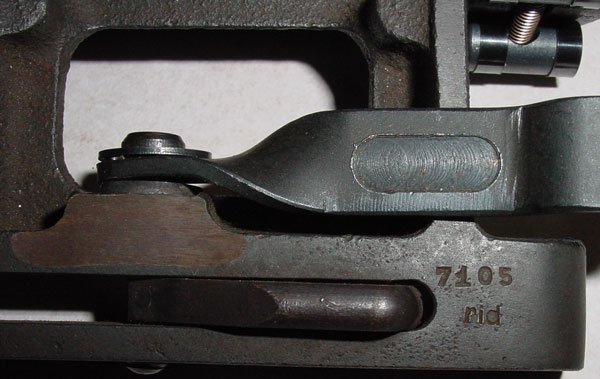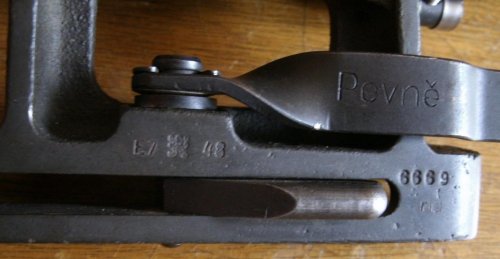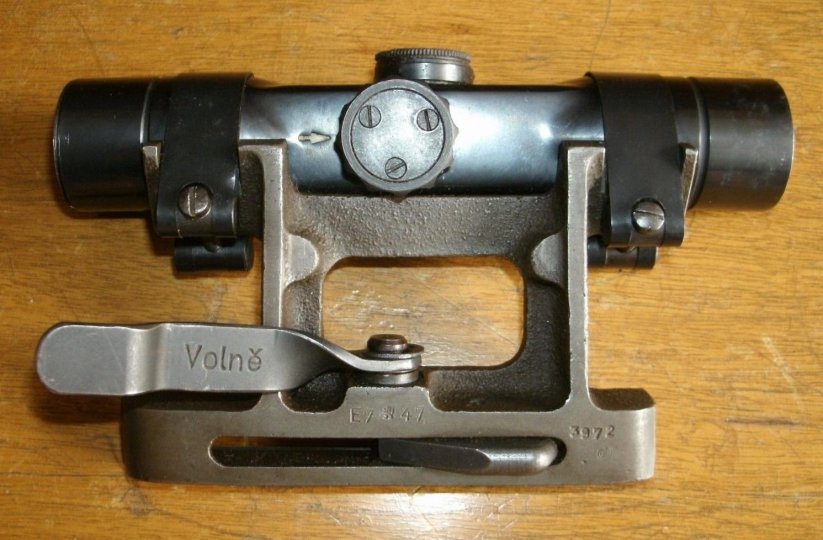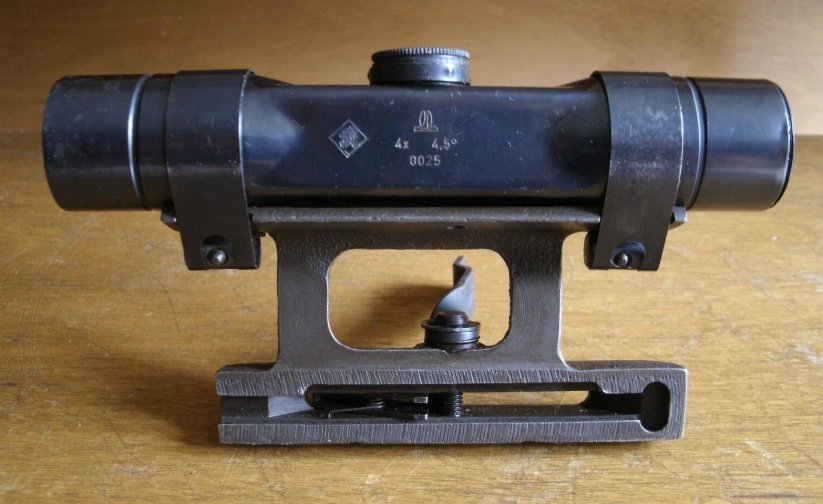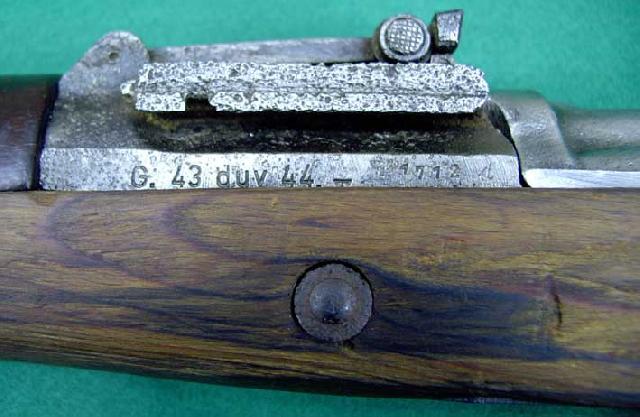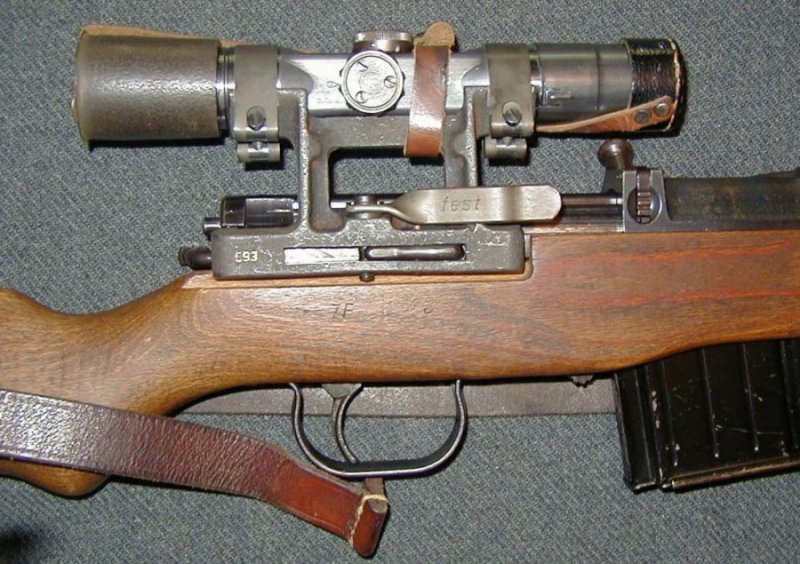The scopes were mainly produced for the G/K43 rifles, but many were also produced
for use on the FG42 - marked "L". Few were actually used for this purpose. The same can be said about the "P"
marked scopes: tested on the MP43 and the "K.Z.F." marked scopes - used on swept back mounts for K98k.
These scopes
were produced by:
AGFA Kamerawerk, München, code "bzz" - a
rare scope. About 3500 made and all marked GwZF4
Opticotechna
GmbH, Prerau (Czechoslovakia), code "dow". About 40,000 produced for the Wehrmacht. Most marked Gw ZF4.
A few of the last were marked: ZF K 43. BLM used almost exclusively "dow". Walther used in some
cases "dow". Opticotechna made about 10,000 more ZF4 marked "dow", but the German marking was lined out, and the scopes were
then used by the Czech army. Almost all of these were marked ZF K 43.
Voigtländer und Sohn, Braunschweig, code "ddx". The
first were marked Gw ZF4. The last were marked K43 and some were double marked: Gw ZF4 K43 or Gw ZF4 L. About were 73,000 produced.
Walther used "ddx".
It was announced on Dec. 15, 1944 that the designation changed from Gw ZF4 to ZF K43 - so the ZF4
suffered also of "the German names games".
The above figures indicate that about 116,500 ZF4 were made for the Wehrmachts G/K43. As told elsewhere on these pages about 57,000 G43 ZF4 were delivered
from Walther and BLM. The actual use of the scopes was only 50% of the production. Where did the other 50% end?
Some were made for the FG42 (marked "L"), some didn't meet the production standards?, some weren't shipped
from the factory?, some were destroyed, bombed etc. - or left over in the weapon factories ?
Background and history
The Gewehr-Zielfernrohr 4-fach (Gw ZF4x) or 4 power telescopic rifle sight was the great white hope of the beleaguered German sniper. Faced with
increasingly skilled Soviet snipers, as well as massive numbers of regular troops, the military leaders pressed for a sniper rifle and scope combination
capable of mass production. After a thorough examination of the Soviet PU telescopic sight and the semi-automatic M1940 Tokarev rifle, it has been
indicated that the German military wanted a copy as fast as possible. This new scope was to be mated with the newly produced G43 semi-automatic rifle.
The general idea was to produce every single G43 with the capability of having a telescopic sight mounted on an integral rail milled into the receiver.
I believe the end result was meant to field a designated marksman's rifle as opposed to a dedicated sniper rifle. In practice, skilled snipers employed
the G43 system. Production levels never reached the point where every good marksman could be equipped with one.
When carefully produced, the Gw ZF4 was quite capable as a sniper sight. Unfortunately for the Germans and subsequently fortunate for the allies, the
quality control on the ZF4 was anything but consistent. It never saw the mass production requested in the original orders and workmanship tapered off
under the constant bombing raids by the allies. Voigtländer, the company that designed the sight, seemed to have the
most problems. Sights made by Opticotechna and J. G. Farbenindustrie seem to have experienced
less problems. Compounding the problems, the accuracy of the G43 rifle never met expectations, which when combined with the ZF4 made for little hope
of first round hits at longer sniping ranges.
In capable hands and when constructed properly, the Gw ZF4 was sufficiently successful in its role. Measuring 6" long (not including the removable
sun shade and rubber eye cup), it was made of stampings to save production time and material. It had flat sides that flared out to round cylinders
at the objective and ocular ends. Elevation adjustment was via a turret mounted on the right side of the telescope body. It was a BDC-type turret
marked in 50-meter increments from 100 to 800 meters. Each positive click approximated one half moa.
Windage was adjusted via a turret mounted on the top of the telescope.
Turret adjustment was simple. Each turret has three locking screws. To zero the rifle, one first removed the screws from one turret, either elevation
or windage. A small circular cover is then removed from the turret top, exposing the center adjuster and thereby allowing the shooter to adjust the
reticle as needed. The adjuster moves quite smoothly and is easy to align. Once the reticle is in the proper position, the circular plate is placed
back in position and the locking screws are reinstalled.
As in the PU, the ZF4 does not have an optically centered reticle. You can observe it moving downward as you dial in longer ranges.
The turret clicks feel fairly precise, however any ham-fisted operator could easily overshoot his mark. The clicks are positive but the distance
between each click is quite small. For instance, if you wanted to dial in 450 meters, it would be very easy to overshoot and click in 500 or even
550 meters. The windage turret is a bit of an odd ball in that there are no numerical markings on it. It has nine vertical hash marks consisting
of a center mark with four marks on each side for left or right adjustment. There are two clicks between each mark. I am guessing that these
represent half moa movements. The windage turret seems useless for adjusting fire in the field as you might with a modern sniper scope.
I believe it was only used to zero the rifle and then covered with the provided sheet metal cap. It seems to me that all of these scopes are best
utilized by holds as opposed to actual adjustments.
The reticle is the typical German Three-Post system. Now 70 years old many have foggy optics, this concerns especially the "dow" scopes. Had the
Germans been able to produce this sight under ideal conditions and in the numbers originally required, I have no doubt that the damage would have
been telling on the allies. While the G43 was hardly an ideal weapon system, it was capable of hits to 400 meters and beyond. Thankfully for the
allies, they were not able to put into effect the theory of the designated marksman. Having a telescoped rifle in each platoon certainly has its
advantages, and with every G43 capable of mounting a scope, the average grunt may well have been able to really reach out and touch someone. A
later version of the ZF4, the ZFK 43/1 closely matched the PU scope and was quite excellent considering how badly Germany was being pounded by
the allied air campaign.
The history of Gw ZF4 and its subsequent marks can hardly be considered a success story. Be that as it may, it was a good attempt at a universal
sight. Had production issues been resolved, the sight was slated for mounting on the K98k, the G/K43 systems and the MP44 assault rifle.
It was also used on the FG42. As Germany's first attempt at a standardized sighting device it made a lot of sense. At the time, its parent
nation was using countless commercial sighting devices and standardization was at best, a dream. In this light, the Gw ZF4 must be viewed
as a worthy attempt at ending a logistic and maintenance nightmare. (cut & pasted with some changes from snipercountry.com)
The color of the triangle indicates the internally used grease:
Blue: grease for cold climate, most are seen with a blue triangle
White: grease for temperated climate
Green: grease for hot climate
Many of the last produced didn't have a color at all
A "dow" scope
A late variant - note the phosphated finish.

with the special and not so common marking "L" - for use on the FG42. (Beware fakes are out there)

A not so cleverly made fake
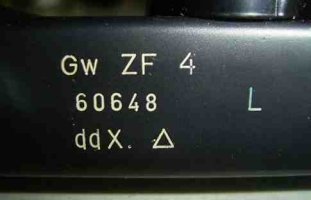
The engraving style of the "L" changed several times
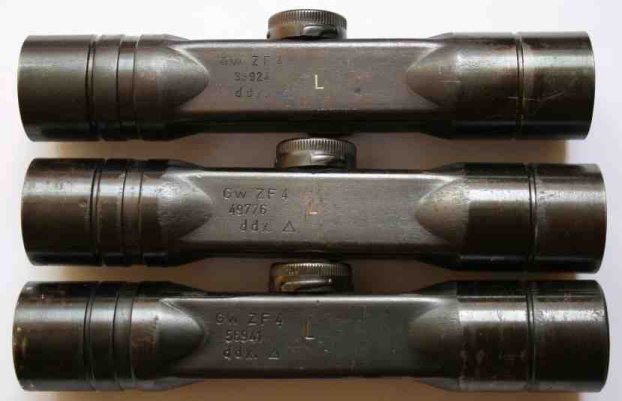
dow and bzz must have stamped the number - before assembly - because the internal small and
fragile parts would have been destroyed by the stamping.
ddx must have grinded the number - after assembly - and after testing. See the pictures.
The consequence must be that the no-good (and numbered) dow and bzz scopes were thrown into the junk heap. This also means that
production of the two plants was less than the serial numbers indicate.
It's a personal perception -
I have not seen it elsewhere.
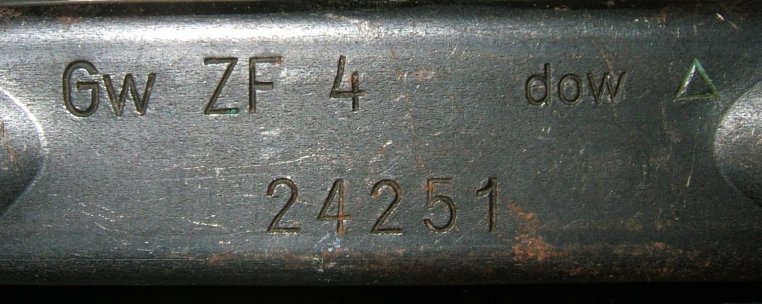
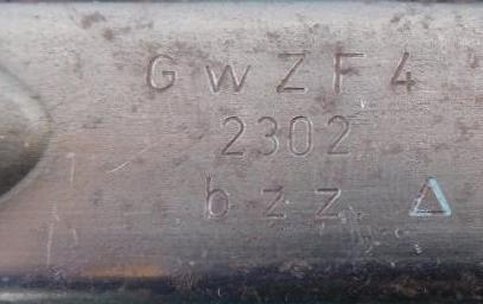
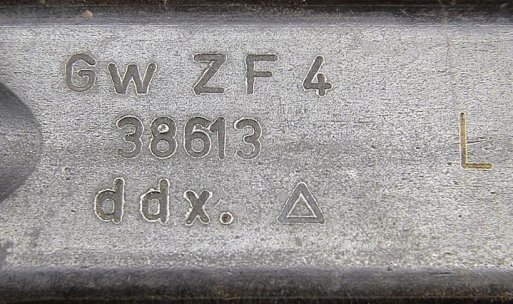
The "Bu" scope
Rare. A special reticle after an idea of Hauptmann Burk, Gebirgsjägerschule Mittenwald. The elevation drum is unmarked.
It was only used when the gun was sighted in.
On the right is a scope with a single post reticle . It is a "ddx" with the number 31874. I have no further information.

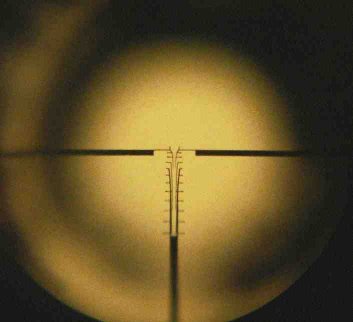
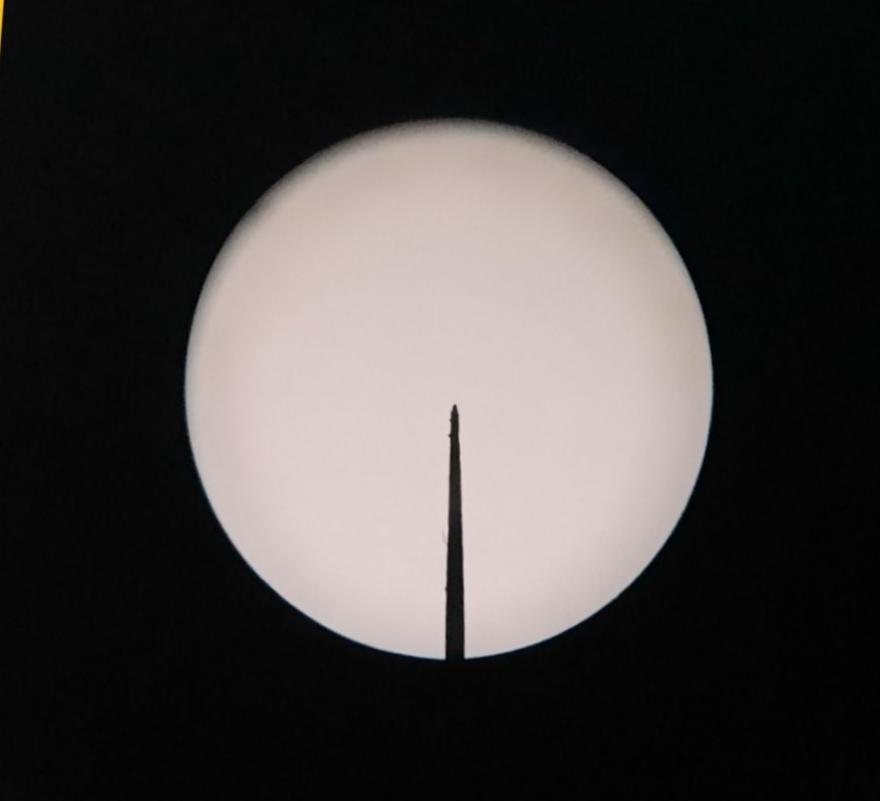
Rare. Used on the MP43 with side mount
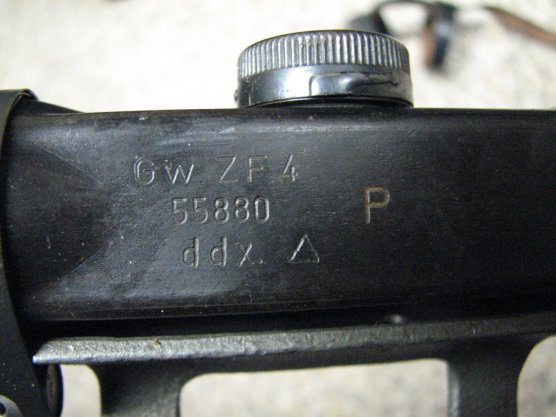
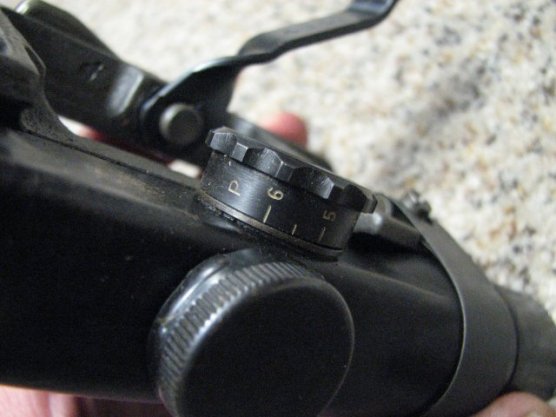
Below a couple of pictures of a "P" scope sold in 2017.
Note that the triangle has been moved. There is a thin tubular sleeve
with engraved numbers and the letter P shrink fit onto an original drum that was slightly turned down on a lathe. That also can explain why the
original triangle was replaced by a new off-set one since the graduation on the tubular sleeve didn't align correctly. It's told that
the clicks are twice as numerous, lighter and more smoothly to adjust compared to the regular ZF4 scopes. However - most collectors think the scope
is a fake. One of the reasons is the provenience; another is that the seller didn't claim it was original.
There are more pictures on the MP44 / StG44 site.
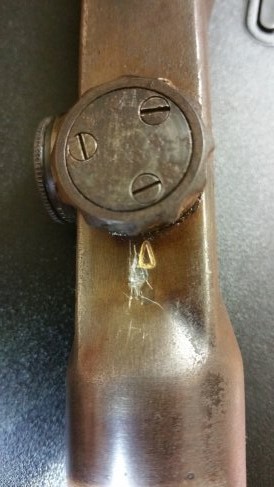
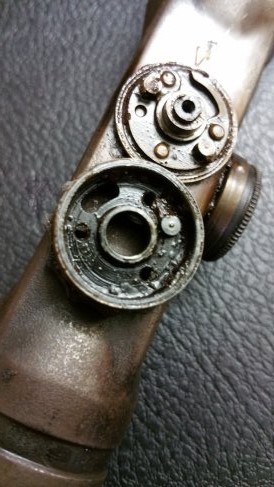
The "Threated Objective lens" scope
Presumed to have been made by Voigtländer. Other than the standard triangle marking for the
elevation dial, there are no other markings on these scopes. They have a "gas plug" which is typical
for the last made Voigtländer scopes. The annular abutment grove is far deeper and set about 10mm to the rear.
This makes fitting the standard ZF4 mount or using the standard rubber eyepice impossible, so it must have been
a kind of test scope.
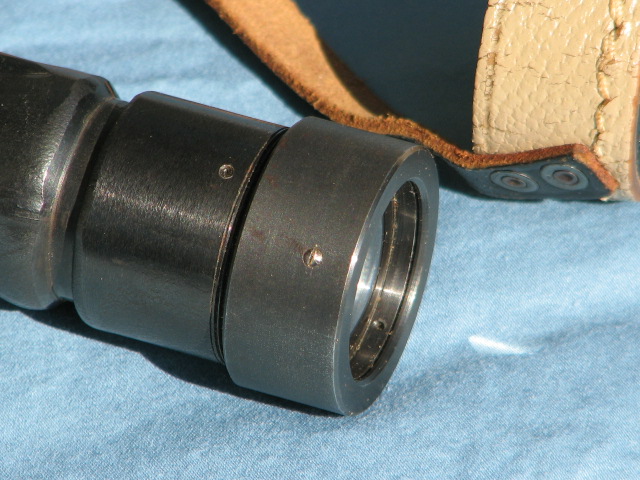
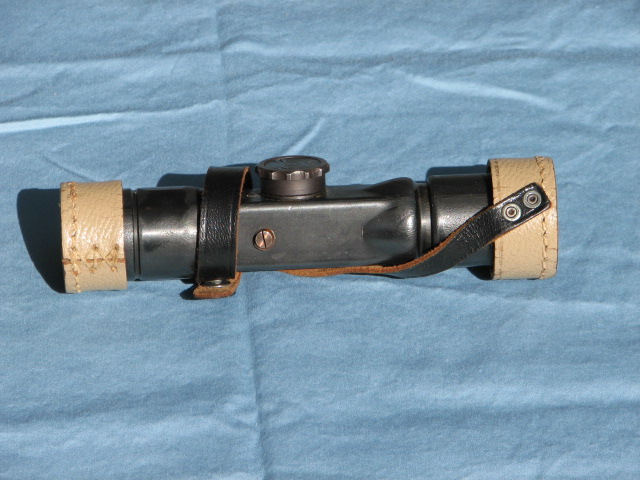
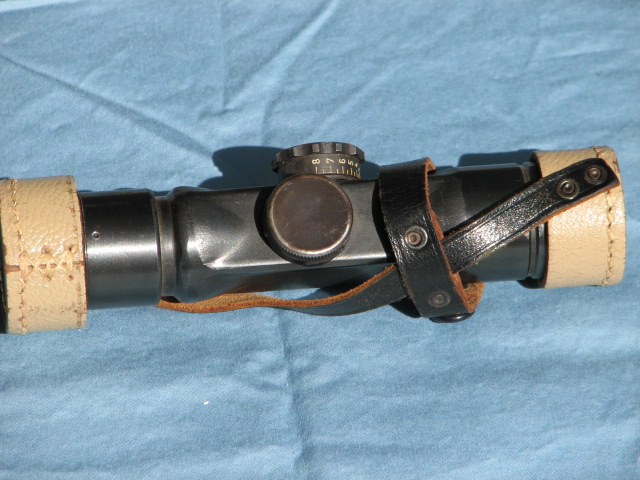
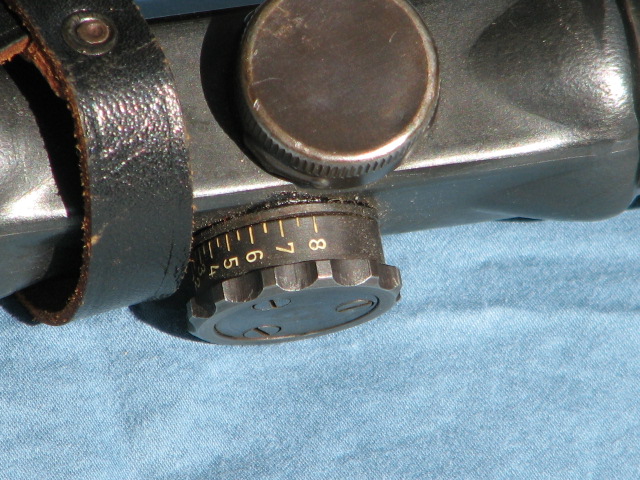
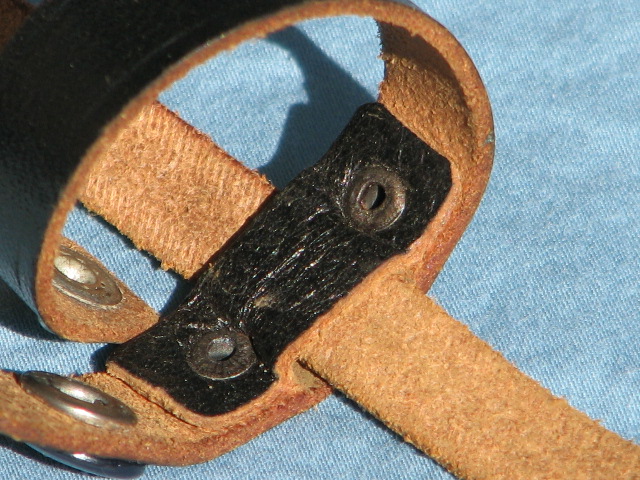
A real FG42 scope
Rare. Marked "L" + FG 42 and a serial number.
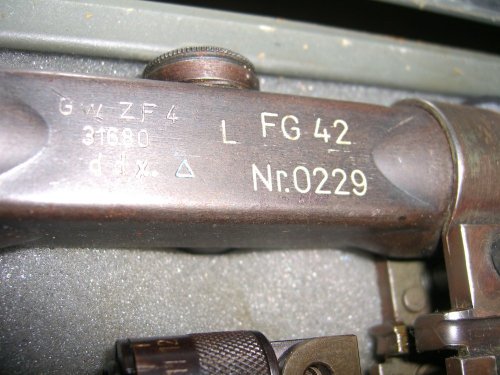
The "K.Z.F." scope
Super rare. Some says that this scope was used on the K98k (Karabiner Zielfernrohr) for the "Swept Back Mount". The first
picture shows a scope with "ddx" marking. The next scope with "dow" marking. Only one is known with that marking,
and it must have been made very late in the war.


The first version of the ZF4 scope was marked "Gw ZF 4". The producer codes were: 1) "dow", 2) "bzz" and 3) "ddx". "dow" changed later the marking to: "ZF K 43" and
"ddx" added "K43" and at last used only "K43". The change came probably after December, 1944 when the name of the rifle was changed from G43 to K43. These scopes are apparently internally identical,
but is this the same for "L" and "K.F.Z." marked scopes ?
K43 marked scopes were used for the K43, barrel length: 55 cm. "L" marked scopes were used for the FG42, barrel length: 50 cm,
and "K.F.Z. marked scopes were (perhaps) used for the K98k rifle, barrel length: 60 cm.
All 3 weapons used the same ammunition and one must assume that the trajectory is about the same even though the length of the barrel is slightly different.
All 3 types of scopes can be turned 14 clicks in the height adjustment,
so it is my claim that all scopes are the same even though the marking is different.
It's something else with "P" labeled scopes. The height adjustment only goes to 600 m, but I assume there are also 14 clicks here ? (may I get an input from a "P" scope owner !)
The "Versuch" (Test) scope
The marking is here:
GZF 69V
037
ddx
This should mean test #69, serial# 037 - some of these don't have the side adjustment (but this here has)

German wartime ZF4s can be found with two types of reticle pattern: "blunt post with horizontal bars", and
"pointed post with horizontal bars".
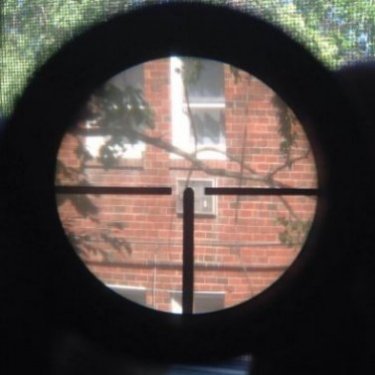
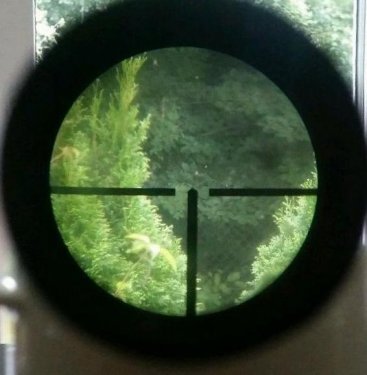
One-piece stamped reticle
Voigtländer used on their last production a "one-piece stamped reticle". It should be more sturdy
than the first design which proved very fragile with several tiny parts. It's possible to see the construction without disassembly.
Look from the front of the scope up against light and note that the sides just aren't up and down, but
go at an angle out to the horizontal bars. (The photo is taken from Darrin Weavers book). The lowest recorded number
with one-piece stamped reticle is ddx #70092 and it's marked K43. It might be possible to find earlier scopes with the stamped steel reticle
(send me a mail) (such a scope with a very low number has been reported, but it's presumed that it has been
repaired - the first ddx scopes were described as full of flaws). One-piece
stamped reticles are always with a "pointed post".

I have been presented with a very unique ZF4 with cross hairs and dot. It's marked Gw ZF4, 46665, ddx. I am told that
the dot moves by turning the knobs. It is difficult to see the crosshairs but I can say that the scope is turned clockwise.
I don't think I want to turn it back with the beautiful view in the background.
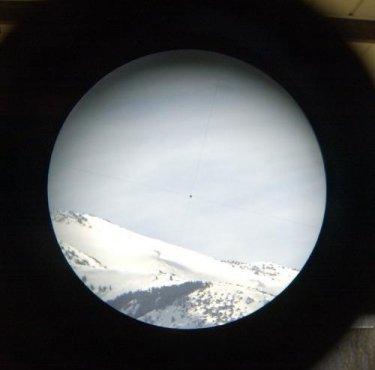
"bzz" and "ddx" used always the "triangle" type. "dow" used up to very late in the war the "triangle",
but the bold "arrow" appears after about number 40,000. All scopes made after the war have the bold arrow,
so if you see a "ddx" or "bzz" scope marked with the bold arrow - then you are sure of fraud. At last a scope with a "real"
arrow - seen only on the very first "ddx" scopes.

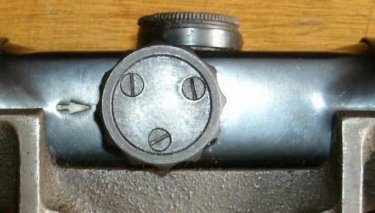
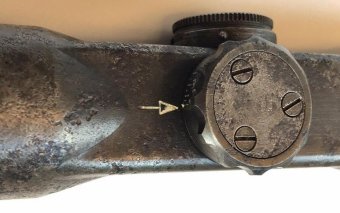
ZF4 used in
Czecho-Slovakia after the war
The G43 was used by the Czechs after the war with the designation vz43. After
the adoption of the vz52 and later the vz58, the Vz43's were relegated to reserve and training use.
Many of the used scopes were normal ZF4 scopes produced during the German occupation. They have a
horizontal line through the markings. Most of these are of the late K43
dow type.
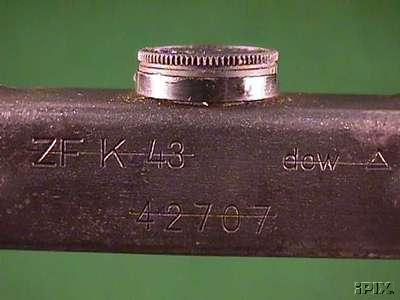
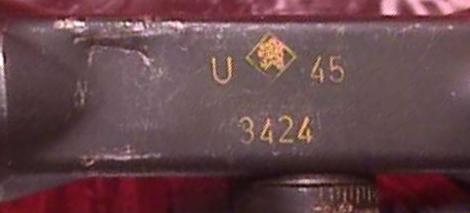
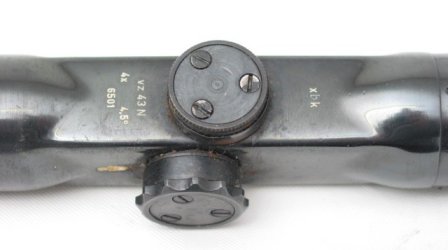
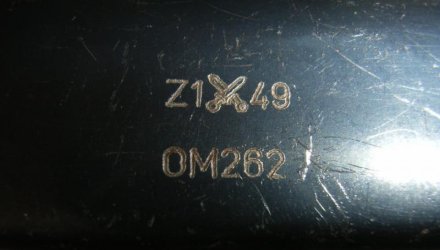
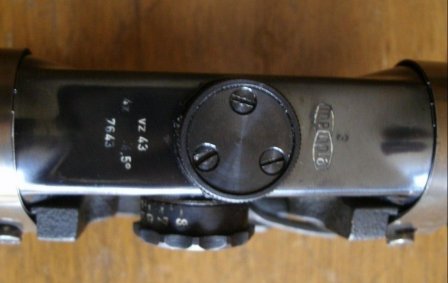
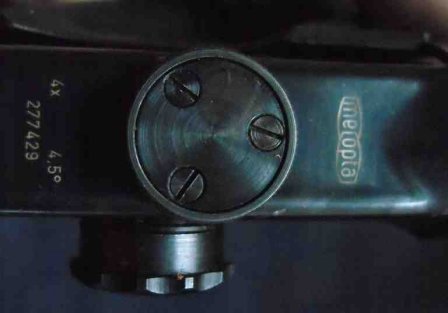
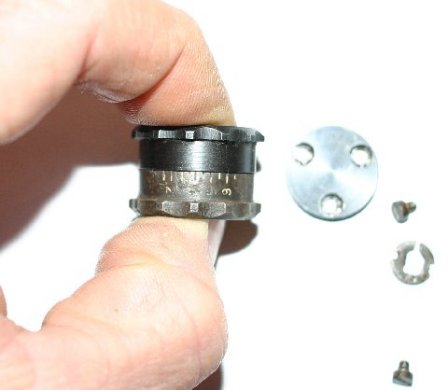
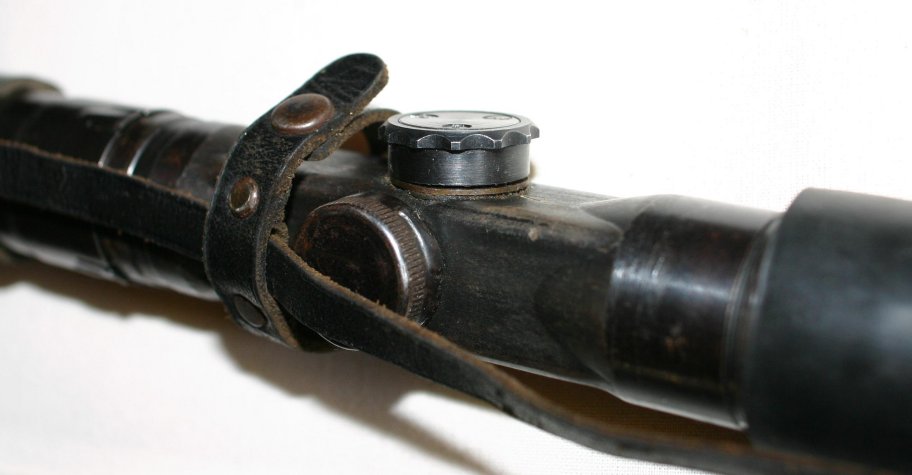
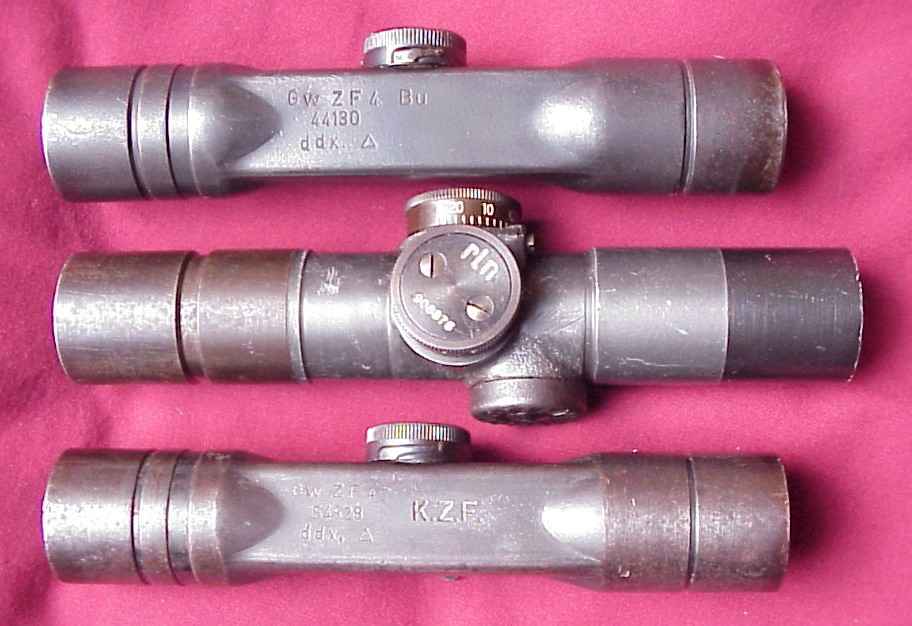
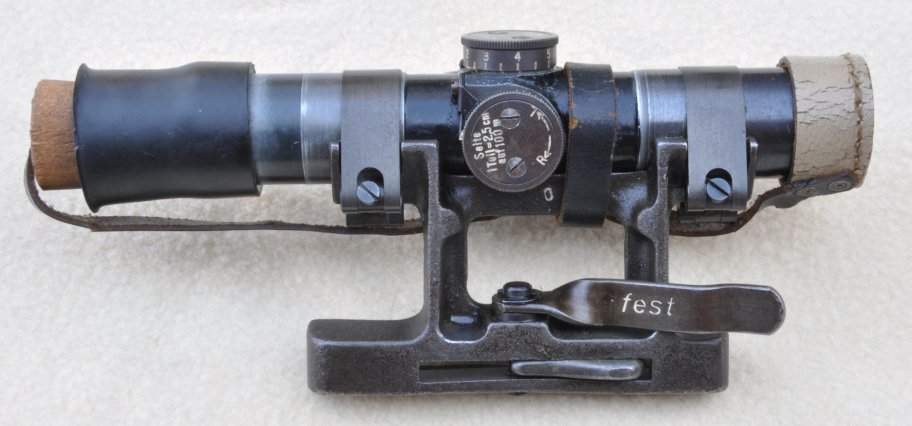
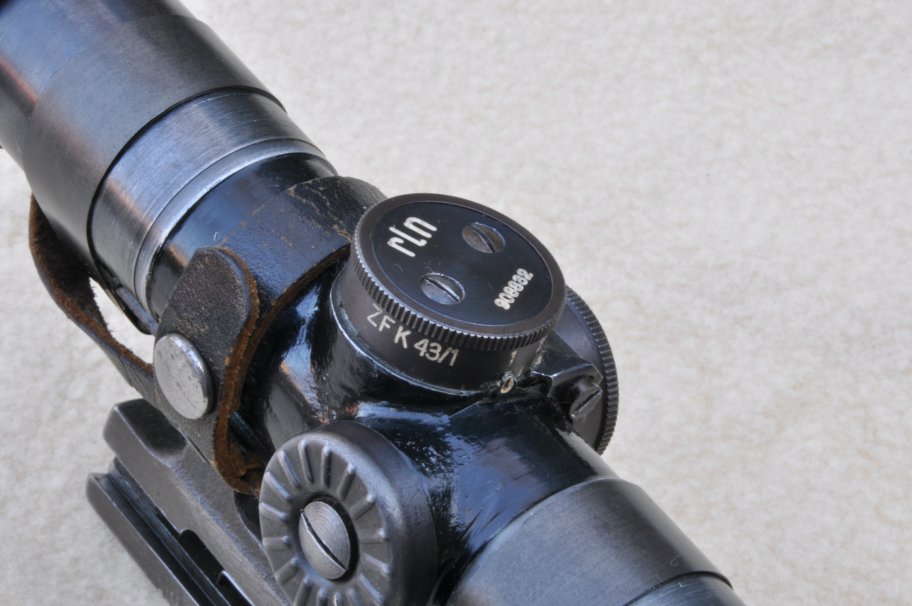

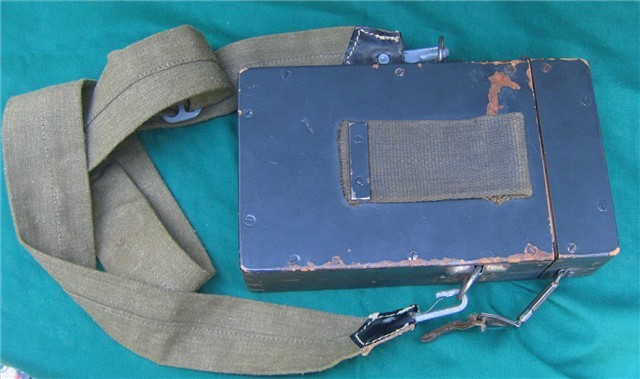
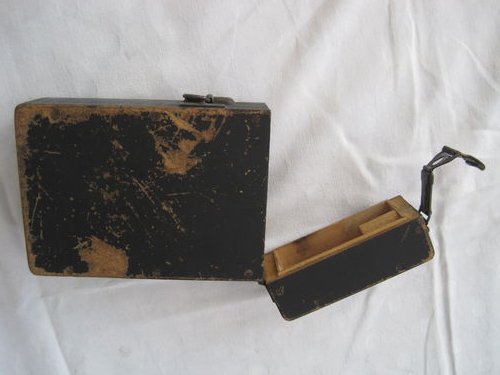

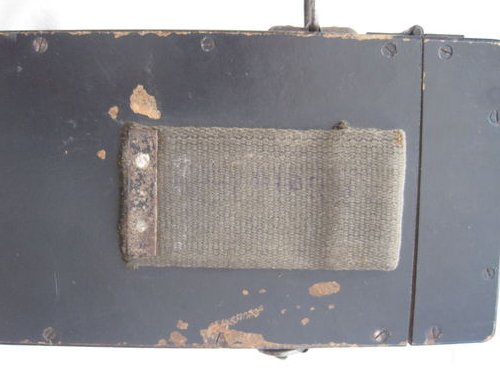
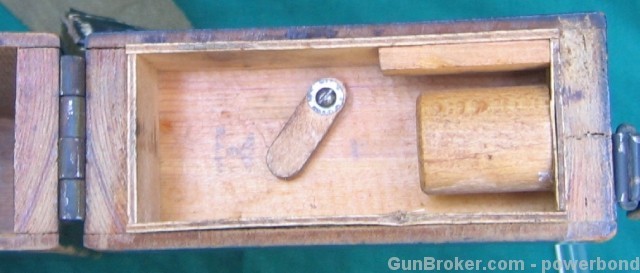
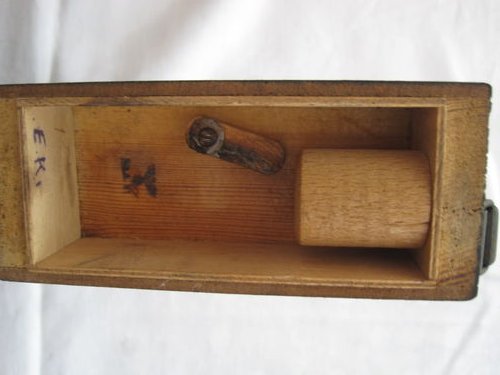
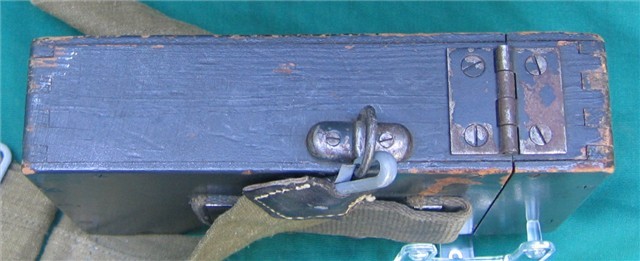
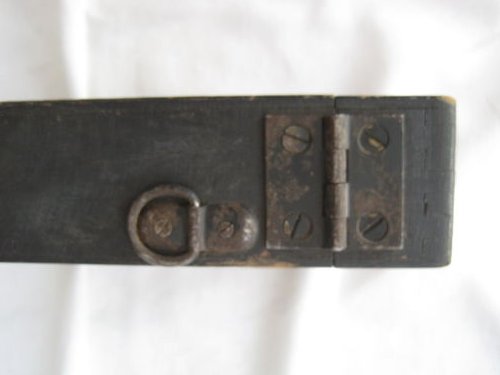
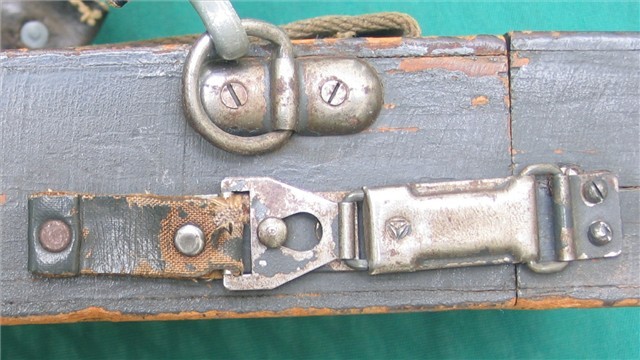
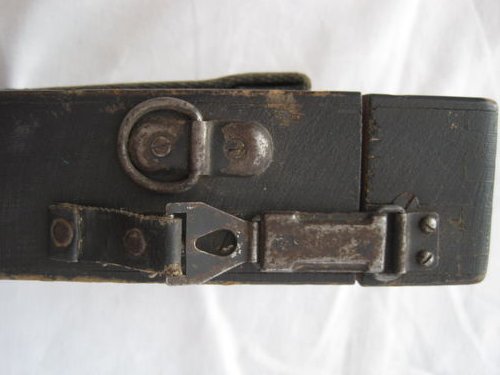
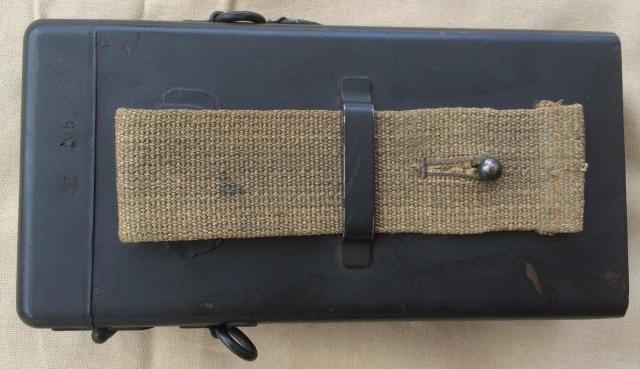
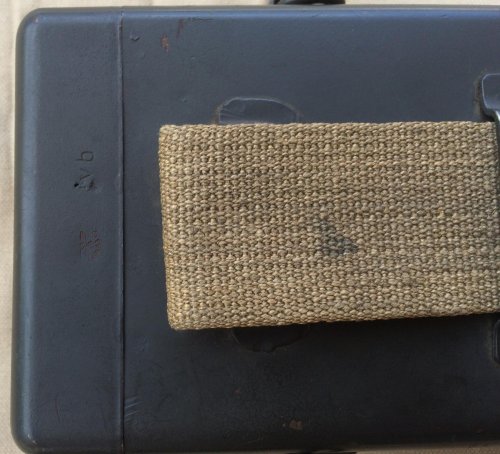
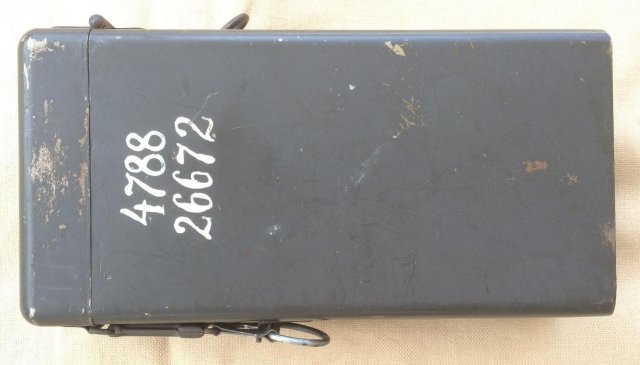
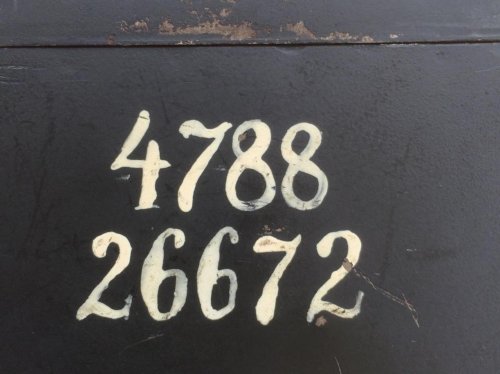

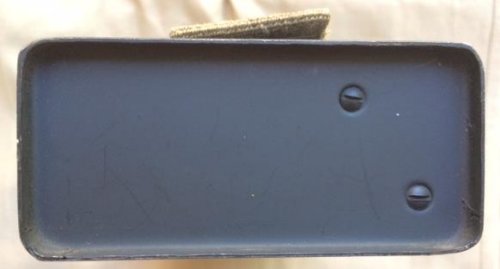

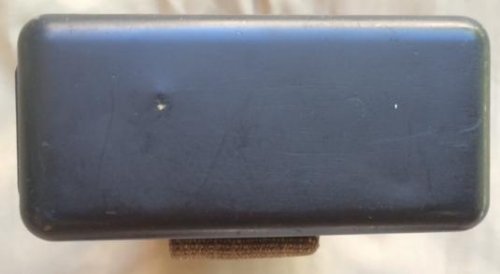
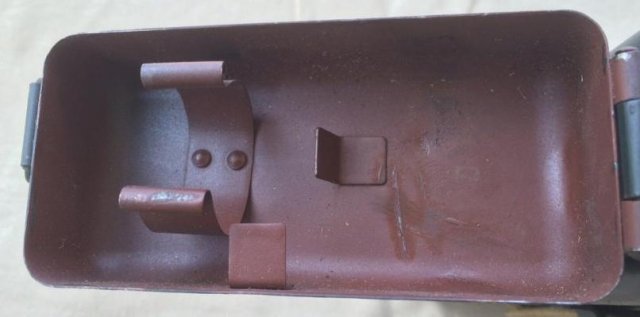
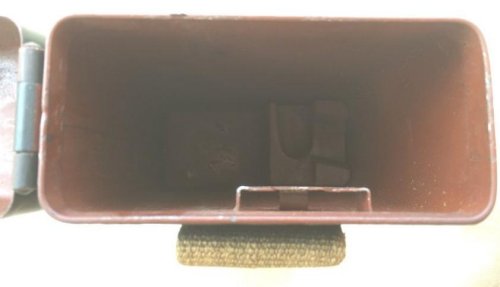
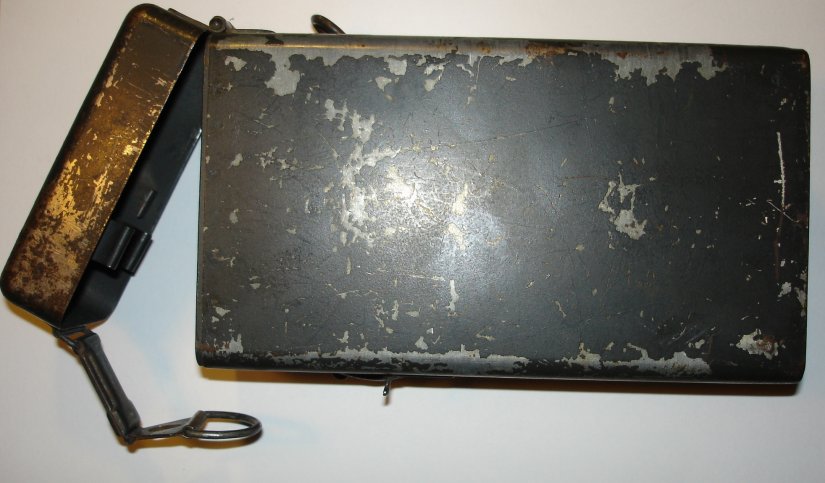
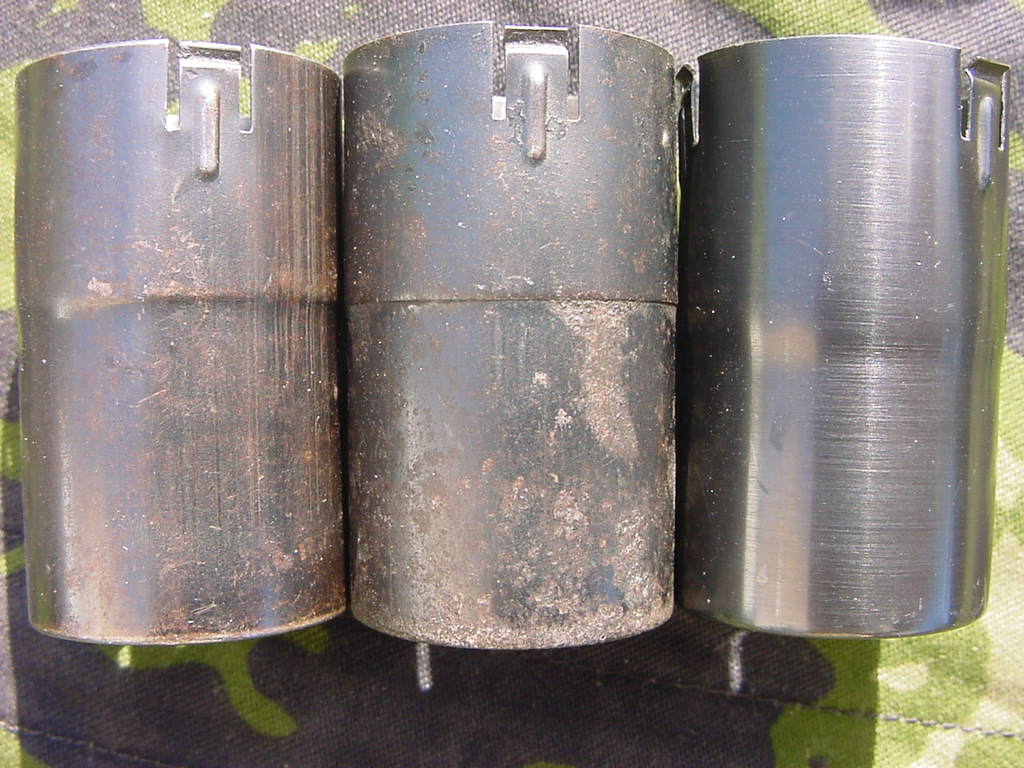
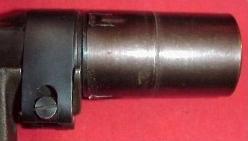
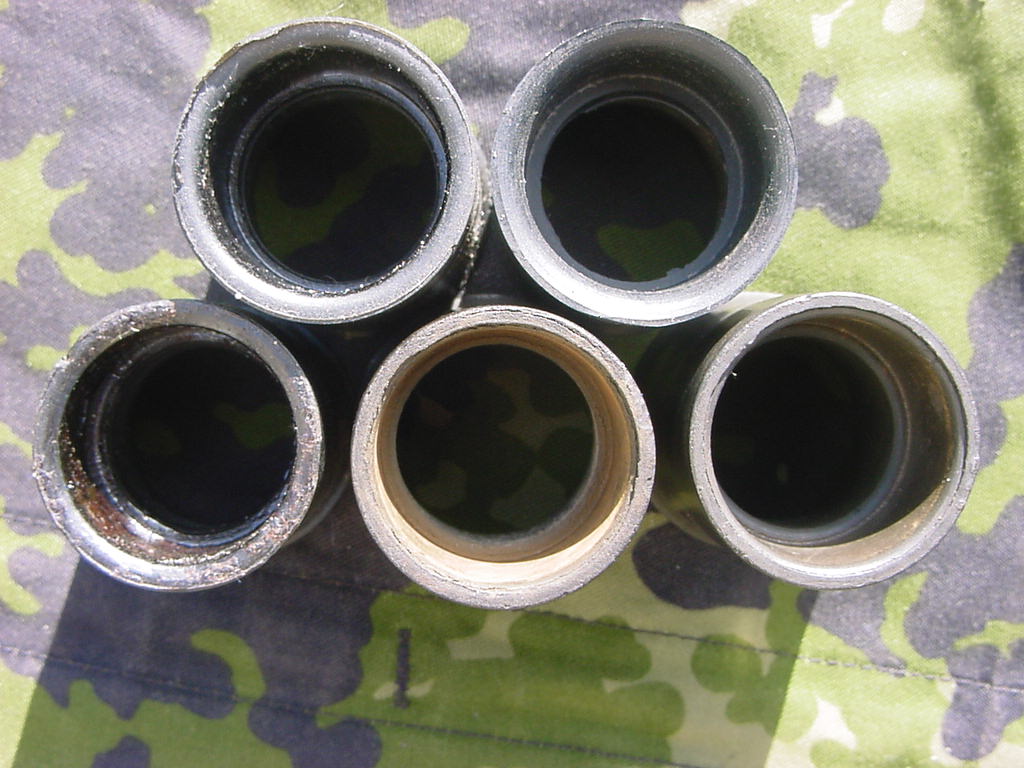
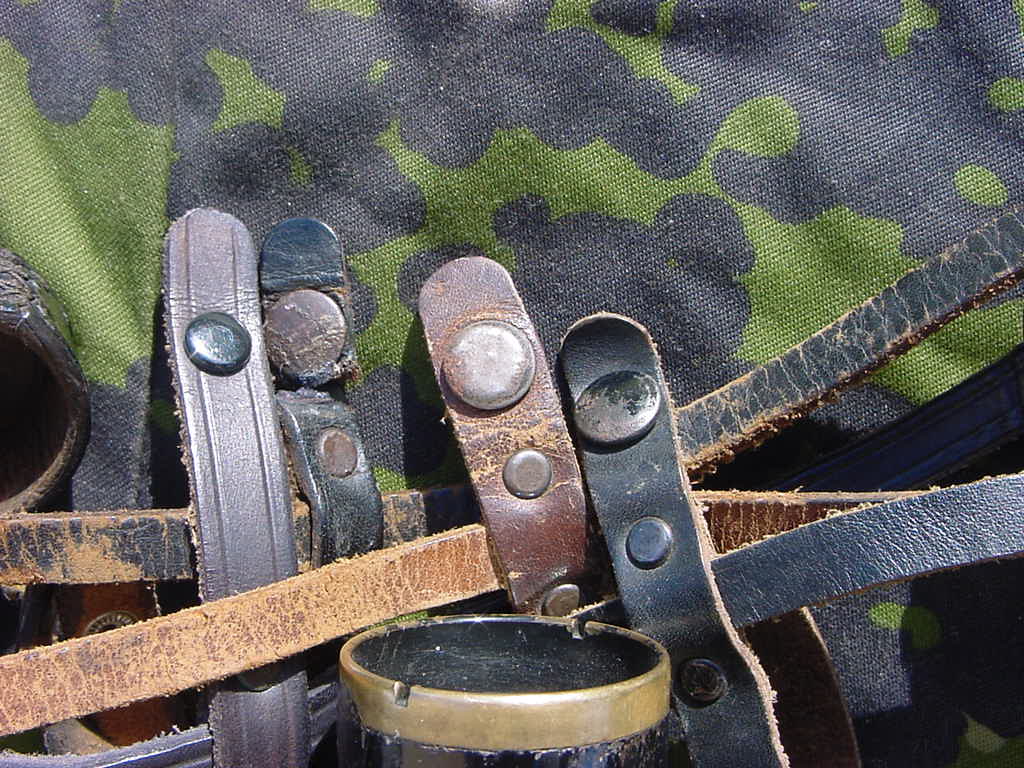
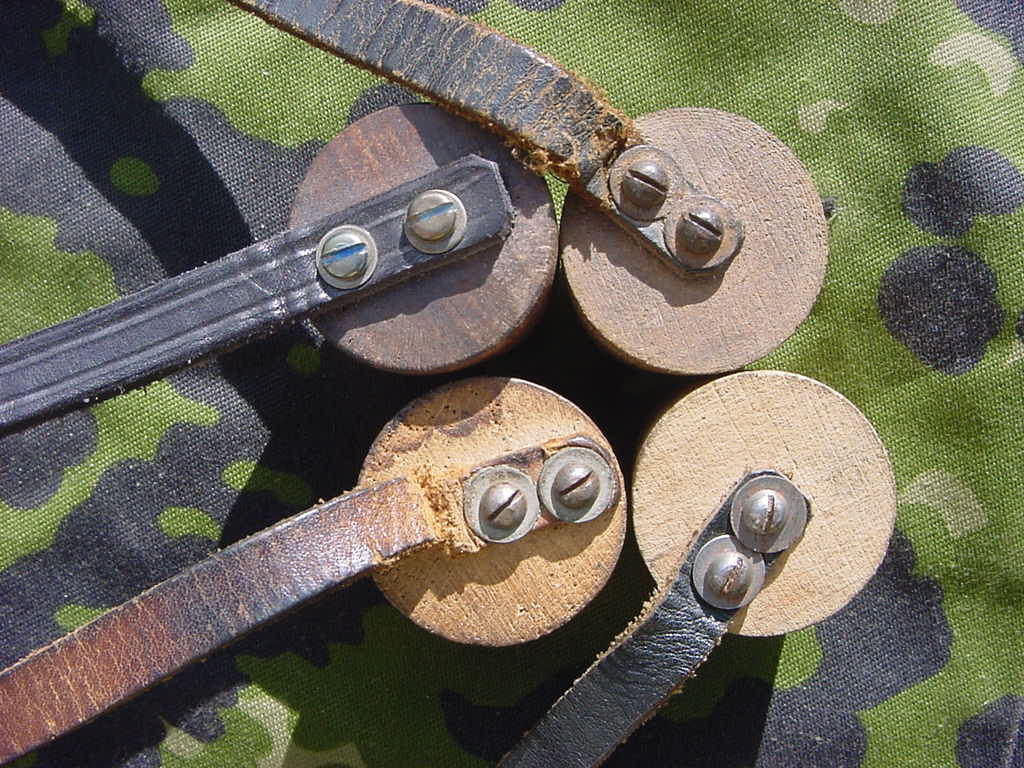

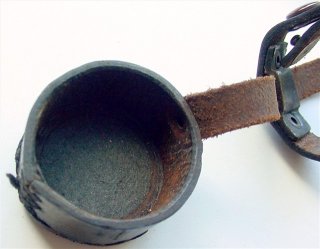
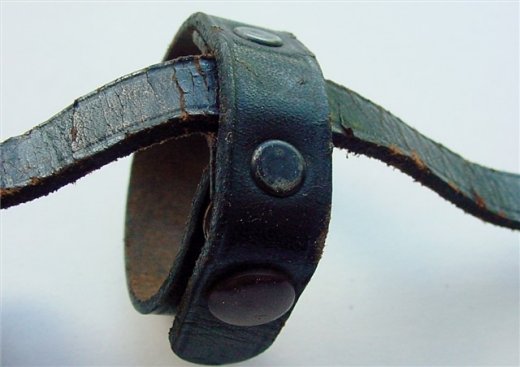
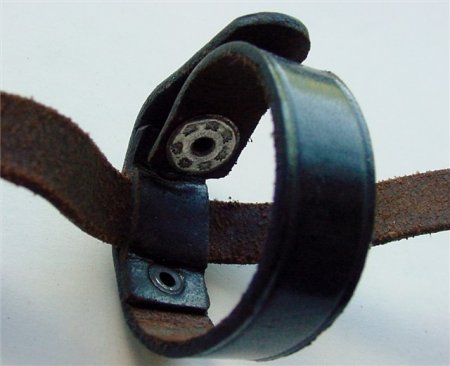
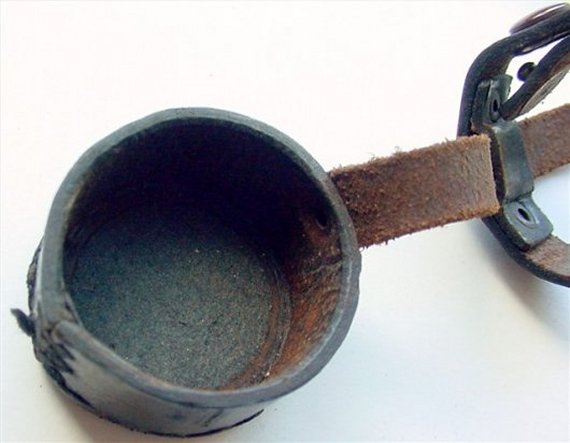
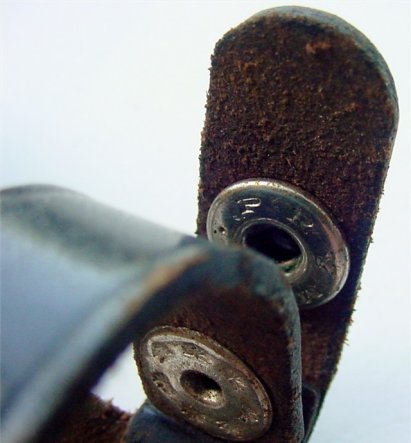
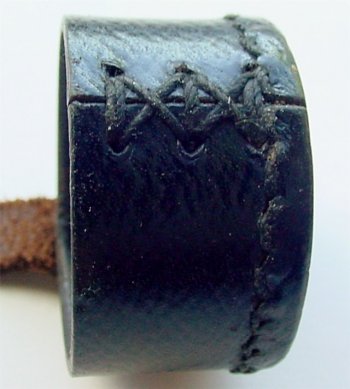
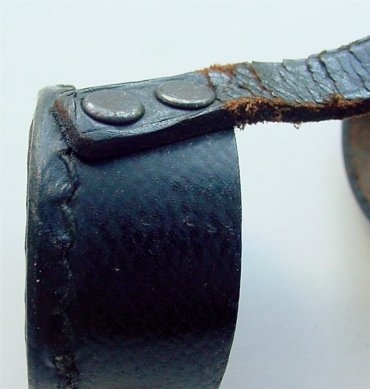
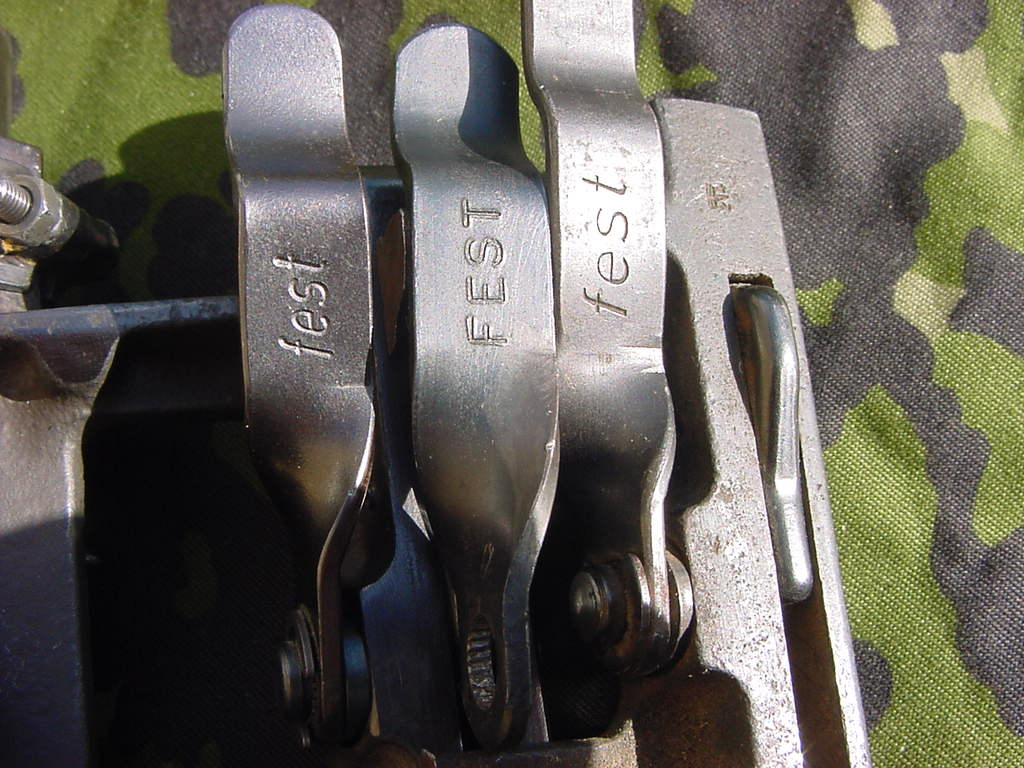
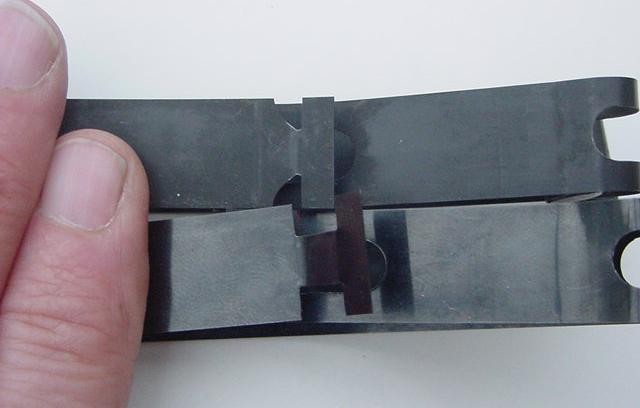
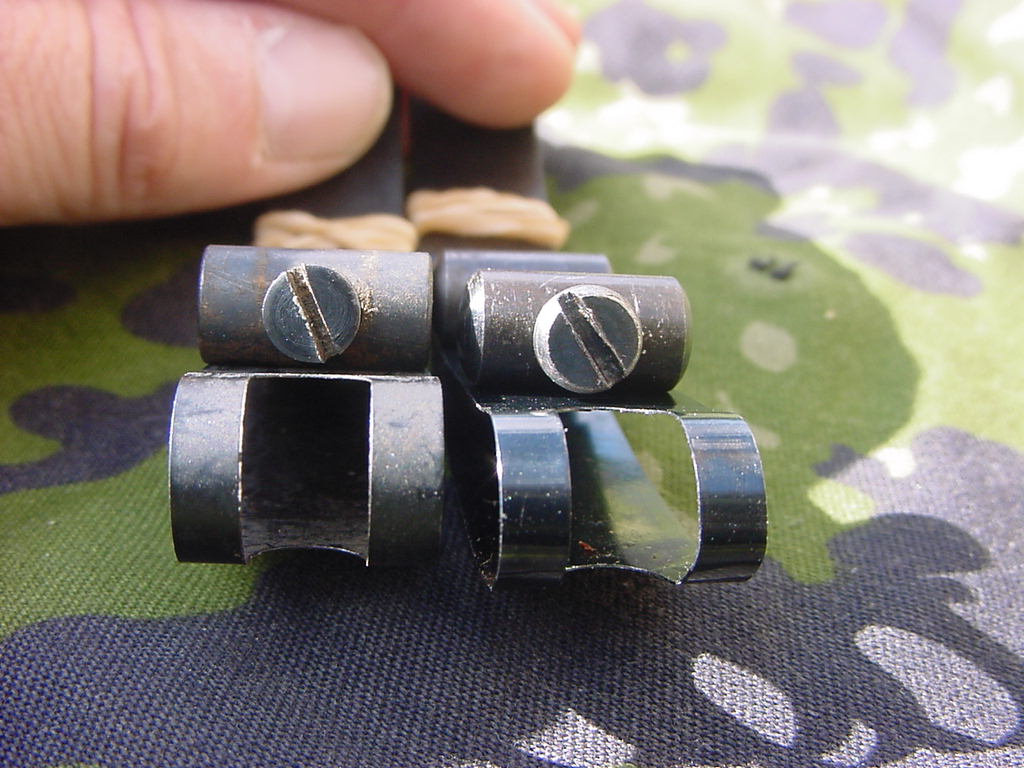
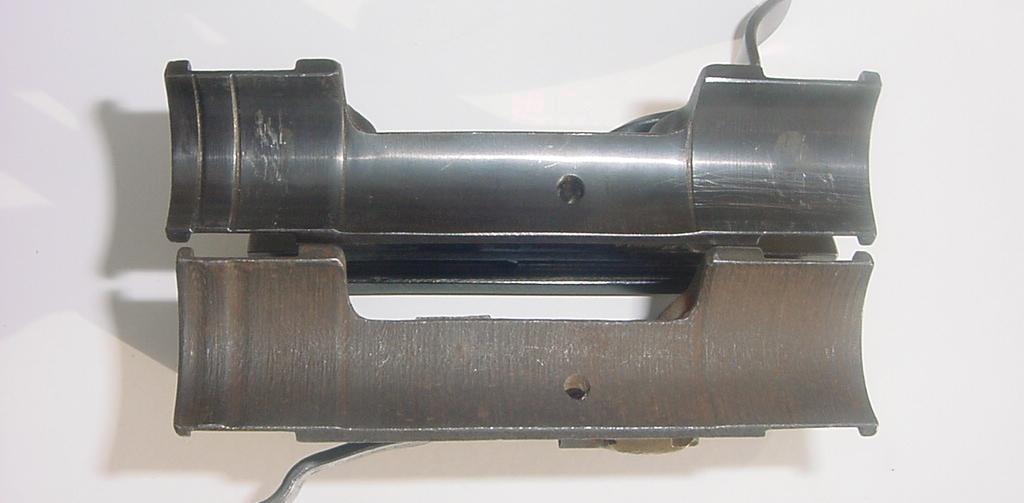
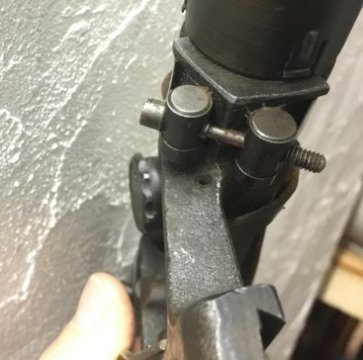
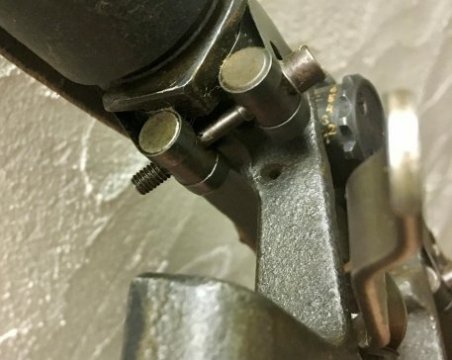
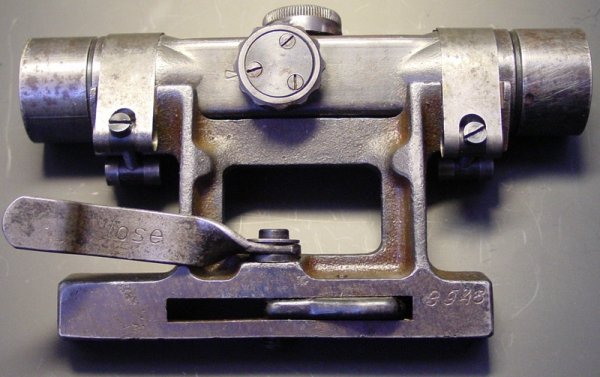 WaA359 mount with round edges
WaA359 mount with round edges